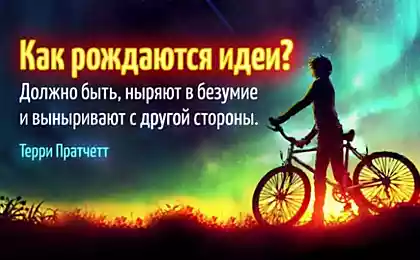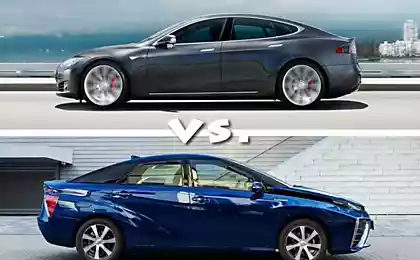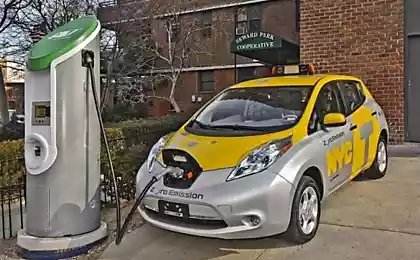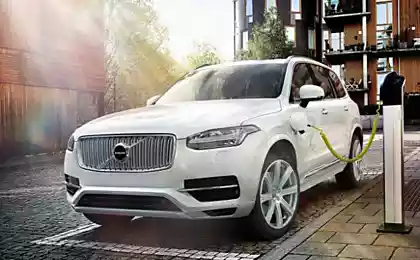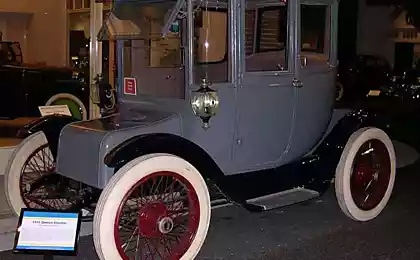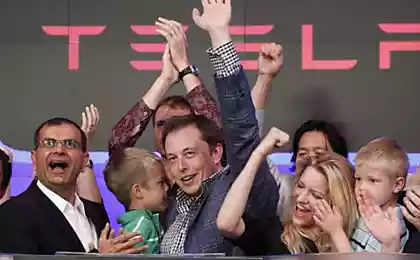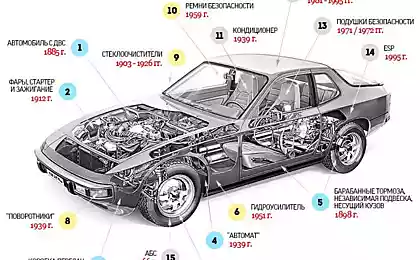536
100 years later. Displace whether hydrogen cars electric cars
A century ago for a place under the sun fought electric cars, steam cars and cars driven by an internal combustion engine.
In this order they set records of speed: electric car now exceeds 100 km/h, racing promobil first accelerated to 200 km/h and the vehicle with the internal combustion engine won the mark of 300 km/h. But, in the end, the battle for the road won it last apparatus — due to relative cheapness, reliability and ease of operation.
And if steam cars had vanished, the electric vehicles a century later, the revenge. Oddly enough, there are three rivals at this time: for the right to become the main driver of power-driven vehicles with electric motors are fighting hydrogen and hybrid powertrains. And each player has strengths and weaknesses.
Hydrogen car
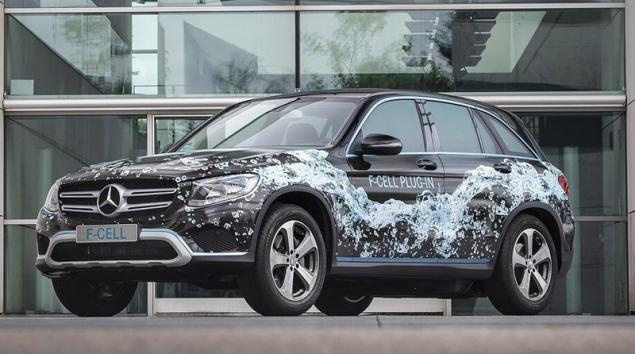
Mercedes-Benz GLC F-Cell. Production is scheduled to start in 2017. the Estimated price — from $50 thousand
Strengths — eco-concept, long range and quick refueling. Whichever option hydrogen drive, we did not consider that the usual internal combustion engine running on hydrogen, or fuel cell (also called F-cell), capable of generating energy for the electric motors of the vehicle directly on Board — product emissions of such a vehicle will be clean water that is even drinkable.
The latter clearly demonstrated Hollywood stars Joshua Jackson and Diane Kruger, spending in 2014 for three days at temperature +50C in the desert — Death Valley. And means of transportation and source of water they served Mercedes-Benz B-class F-cell. However, these units have serious shortcomings. For hydrogen internal combustion engines is, for example, a high explosive, less compared with gasoline, power, and rapid wear. However, limited quantities on the market has already released two models of such cars — the BMW Hydrogen 7 and Mazda rotary RX-8 hydrogen. By the way, for rotary motors flaws mentioned above less relevant.
Compared to engine running on hydrogen, fuel cells have several advantages. After their cost has been to economically acceptable levels, the main drawback remains the only relatively large volume of the fuel tank and the possibility of leakage of hydrogen through the connections in the fuel system.
With cars of this type are experimenting many manufacturers: Mercedes-Benz A-class F-cell B-class F-cell and GLC recently revealed F-cell, Ford Focus FCV, the Hyundai Tucson FCE, Nissan X-TRAIL FCV, Honda FCX, Toyota Mirai finally. At different times, they came on the market in the form of experimental samples, or industrial and experimental batches. And the models list is not exhaustive.
Meanwhile, in addition to explosivity of hydrogen, easy to creat an explosive mixture in enclosed spaces, in the way of expansion of hydrogen cars is still a number of obstacles. It is expensive, is quite energy-intensive technologies of production and storage of hydrogen. And the lack of a refueling infrastructure, which will require a huge investment in hydrogen filling stations is 5-10 times more expensive than gasoline. In the presence of cheap oil, such investment can hardly be justified on a large scale. So vodorodnaya is likely to suffer the fate of steam cars. At the very least, a serious argument to think otherwise, yet.
Autohybrid
Hyundai Ioniq Hybrid. Price — from 25 thousand euros
Hybrid vehicle power unit which in addition to the internal combustion engine includes an electric motor, regardless of which algorithm is the interaction between them, is, if not yesterday, then certainly the "transition" concept. Units of this type are today practically all manufacturers.
The most famous hybrid car and the most common in Ukraine — the Toyota Prius, (the population of which, however, is rapidly declining thanks to the efforts of employees of the patrol police, mercilessly breaking them). Of the expected new products, by the way, it is worth mentioning structurally close to each other Niro Kia and Hyundai Ioniq, the presentation of which Ukraine promised at the turn of 2016 and 2017.
The main advantage of hybrids — the fuel efficiency, the main drawback is the price and relative difficulty of maintenance. Depending on how well the designers managed to choose the right combination of motors and rebuild the algorithm of their interaction, the real fuel savings compared with pure diesel equivalents is from 20 to 60% depending on driving conditions.
And this seems to be the limit. Therefore, in place of the usual hybrids come plug-in hybrid (Plug-in) which can not only refuel with gasoline or diesel fuel, but also to charge from a regular electrical outlet. Due to the presence of high-capacity batteries such cars to fully combine the benefits of electric vehicle and traditional vehicle. They are able to overcome on one drive about 50-70 miles and, at the same time, provide the owner the ability to travel arbitrarily large distances thanks to the petrol engine.
Fuel consumption will depend on operating conditions: for short trips with regular charging from the wall it tends to zero, and on long journeys — to the performance of conventional hybrid. So the immediate future probably lies with such machines. Not casually Mercedes-Benz plans to 2018-2020 year to have a plug-in hybrid versions of all their models.
Electric

The Swedish electric mobility startup Uniti gathered for the creation of city car 1 227 990 euros. The price of cars will range from $23 thousand for the First delivery is planned for 2019
A century ago the electric car did not become an everyday means of transportation due to technological imperfections of the then batteries: they were heavy, had a low specific capacity and it was very uncomfortable to operate. To recharge the batteries, they had to be removed from the vehicle and long enough to charge.
These days, ironically, have to deal with similar problems: high weight and battery cost, limited cruising range, long charge, high rate of depreciation of the car (a significant loss of value for subsequent resale as a used). Because of this a long time electric cars seemed an obvious outsider compared to the more versatile and less expensive hybrids.
Gradually, however, the electric car clear items. Increased range (up to 300-500 km) and charging speed (with the help of special charging stations at 80% battery today, you can fill in 30 minutes). In the near future the developers promise to halve the cost of battery pack -up to $5 thousand, Therefore, begins to decline to an economically viable level, allowing for savings on fuel to recoup the overpayment, and the price of the car.
And soon, you see, and graphene technologies leave the labs and go out on a industrial level, after which available will be the battery of a new type — light, capacious and cheap. So, despite the delay at the start, in the long term the electric car has all the chances to win in this game. published
Source: www.dsnews.ua/future/sto-let-spustya-vytesnyat-li-vodorodnye-avto-elektromobili-27112016140000
In this order they set records of speed: electric car now exceeds 100 km/h, racing promobil first accelerated to 200 km/h and the vehicle with the internal combustion engine won the mark of 300 km/h. But, in the end, the battle for the road won it last apparatus — due to relative cheapness, reliability and ease of operation.
And if steam cars had vanished, the electric vehicles a century later, the revenge. Oddly enough, there are three rivals at this time: for the right to become the main driver of power-driven vehicles with electric motors are fighting hydrogen and hybrid powertrains. And each player has strengths and weaknesses.
Hydrogen car

Mercedes-Benz GLC F-Cell. Production is scheduled to start in 2017. the Estimated price — from $50 thousand
Strengths — eco-concept, long range and quick refueling. Whichever option hydrogen drive, we did not consider that the usual internal combustion engine running on hydrogen, or fuel cell (also called F-cell), capable of generating energy for the electric motors of the vehicle directly on Board — product emissions of such a vehicle will be clean water that is even drinkable.
The latter clearly demonstrated Hollywood stars Joshua Jackson and Diane Kruger, spending in 2014 for three days at temperature +50C in the desert — Death Valley. And means of transportation and source of water they served Mercedes-Benz B-class F-cell. However, these units have serious shortcomings. For hydrogen internal combustion engines is, for example, a high explosive, less compared with gasoline, power, and rapid wear. However, limited quantities on the market has already released two models of such cars — the BMW Hydrogen 7 and Mazda rotary RX-8 hydrogen. By the way, for rotary motors flaws mentioned above less relevant.
Compared to engine running on hydrogen, fuel cells have several advantages. After their cost has been to economically acceptable levels, the main drawback remains the only relatively large volume of the fuel tank and the possibility of leakage of hydrogen through the connections in the fuel system.
With cars of this type are experimenting many manufacturers: Mercedes-Benz A-class F-cell B-class F-cell and GLC recently revealed F-cell, Ford Focus FCV, the Hyundai Tucson FCE, Nissan X-TRAIL FCV, Honda FCX, Toyota Mirai finally. At different times, they came on the market in the form of experimental samples, or industrial and experimental batches. And the models list is not exhaustive.
Meanwhile, in addition to explosivity of hydrogen, easy to creat an explosive mixture in enclosed spaces, in the way of expansion of hydrogen cars is still a number of obstacles. It is expensive, is quite energy-intensive technologies of production and storage of hydrogen. And the lack of a refueling infrastructure, which will require a huge investment in hydrogen filling stations is 5-10 times more expensive than gasoline. In the presence of cheap oil, such investment can hardly be justified on a large scale. So vodorodnaya is likely to suffer the fate of steam cars. At the very least, a serious argument to think otherwise, yet.
Autohybrid
Hyundai Ioniq Hybrid. Price — from 25 thousand euros
Hybrid vehicle power unit which in addition to the internal combustion engine includes an electric motor, regardless of which algorithm is the interaction between them, is, if not yesterday, then certainly the "transition" concept. Units of this type are today practically all manufacturers.
The most famous hybrid car and the most common in Ukraine — the Toyota Prius, (the population of which, however, is rapidly declining thanks to the efforts of employees of the patrol police, mercilessly breaking them). Of the expected new products, by the way, it is worth mentioning structurally close to each other Niro Kia and Hyundai Ioniq, the presentation of which Ukraine promised at the turn of 2016 and 2017.
The main advantage of hybrids — the fuel efficiency, the main drawback is the price and relative difficulty of maintenance. Depending on how well the designers managed to choose the right combination of motors and rebuild the algorithm of their interaction, the real fuel savings compared with pure diesel equivalents is from 20 to 60% depending on driving conditions.
And this seems to be the limit. Therefore, in place of the usual hybrids come plug-in hybrid (Plug-in) which can not only refuel with gasoline or diesel fuel, but also to charge from a regular electrical outlet. Due to the presence of high-capacity batteries such cars to fully combine the benefits of electric vehicle and traditional vehicle. They are able to overcome on one drive about 50-70 miles and, at the same time, provide the owner the ability to travel arbitrarily large distances thanks to the petrol engine.
Fuel consumption will depend on operating conditions: for short trips with regular charging from the wall it tends to zero, and on long journeys — to the performance of conventional hybrid. So the immediate future probably lies with such machines. Not casually Mercedes-Benz plans to 2018-2020 year to have a plug-in hybrid versions of all their models.
Electric

The Swedish electric mobility startup Uniti gathered for the creation of city car 1 227 990 euros. The price of cars will range from $23 thousand for the First delivery is planned for 2019
A century ago the electric car did not become an everyday means of transportation due to technological imperfections of the then batteries: they were heavy, had a low specific capacity and it was very uncomfortable to operate. To recharge the batteries, they had to be removed from the vehicle and long enough to charge.
These days, ironically, have to deal with similar problems: high weight and battery cost, limited cruising range, long charge, high rate of depreciation of the car (a significant loss of value for subsequent resale as a used). Because of this a long time electric cars seemed an obvious outsider compared to the more versatile and less expensive hybrids.
Gradually, however, the electric car clear items. Increased range (up to 300-500 km) and charging speed (with the help of special charging stations at 80% battery today, you can fill in 30 minutes). In the near future the developers promise to halve the cost of battery pack -up to $5 thousand, Therefore, begins to decline to an economically viable level, allowing for savings on fuel to recoup the overpayment, and the price of the car.
And soon, you see, and graphene technologies leave the labs and go out on a industrial level, after which available will be the battery of a new type — light, capacious and cheap. So, despite the delay at the start, in the long term the electric car has all the chances to win in this game. published
Source: www.dsnews.ua/future/sto-let-spustya-vytesnyat-li-vodorodnye-avto-elektromobili-27112016140000
And your children know how to formulate request?
Robert Waldinger: Happiness — a study of a lifetime
